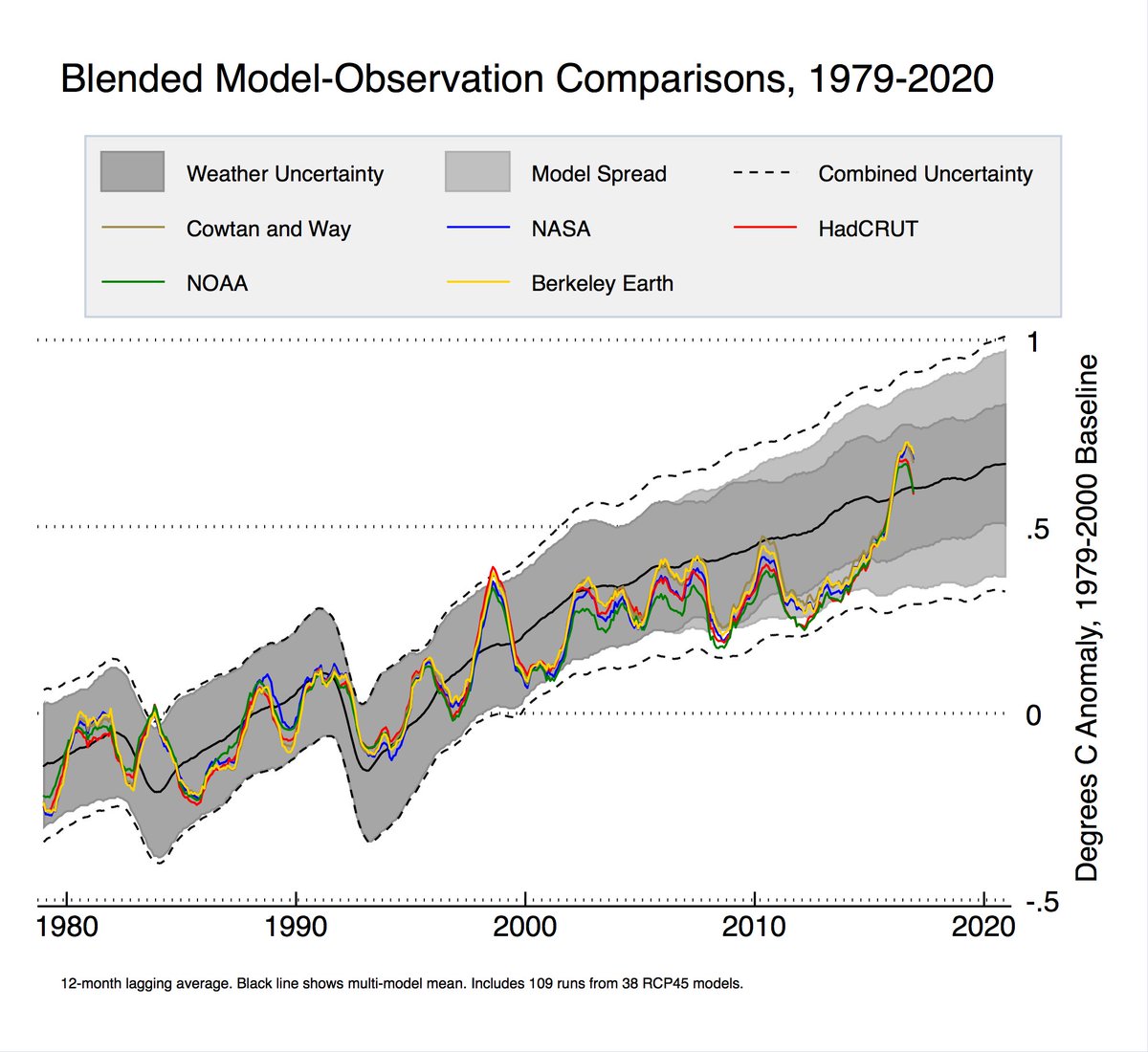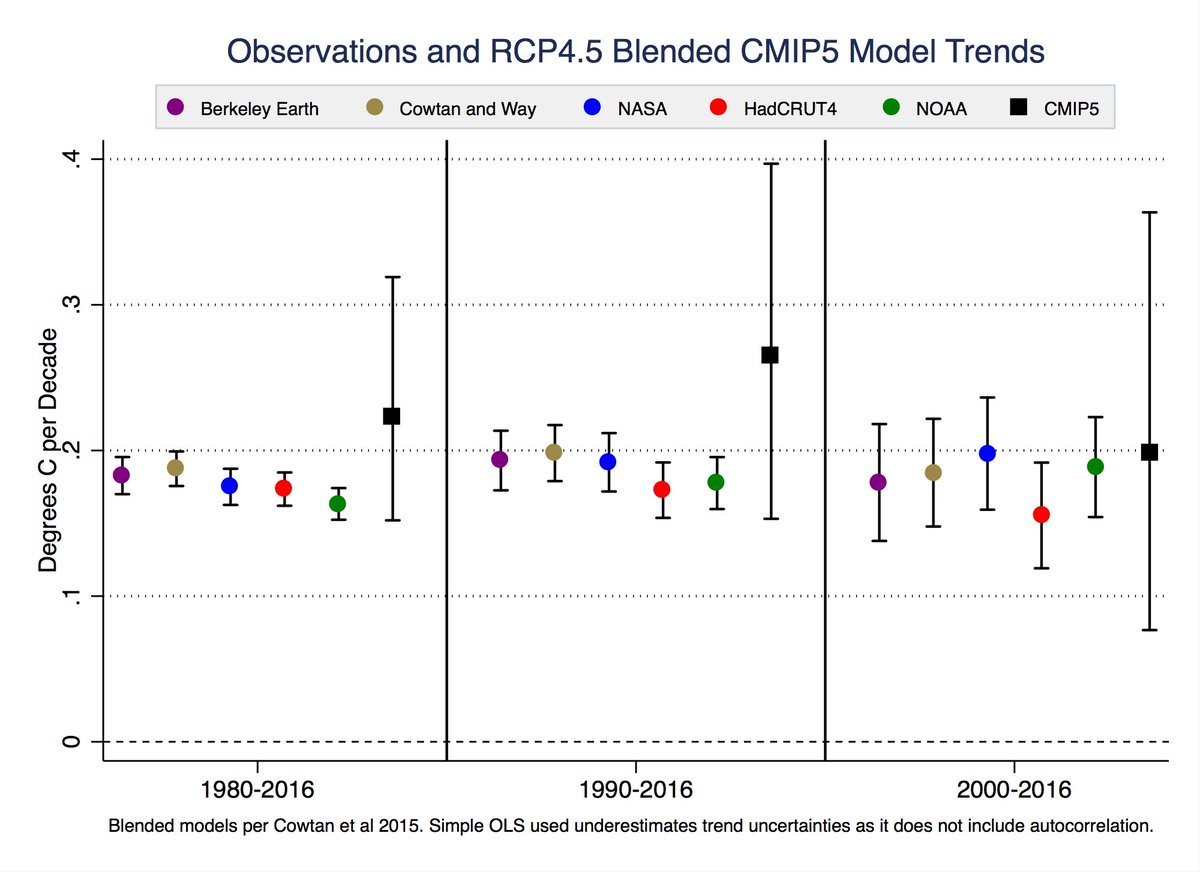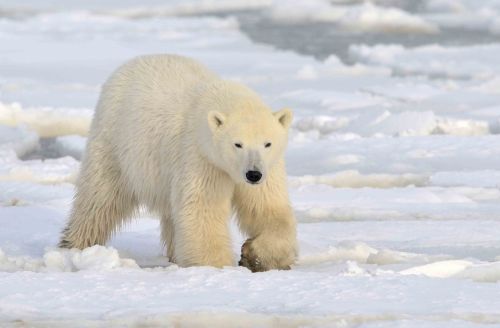Analysis: US biologist’s defense of flawed polar bear predictions is an embarrassment to science
US biologist’s defense of flawed polar bear predictions is an embarrassment to science
A few days ago in a radio interview, a senior US Fish & Wildlife biologist repeated the tall tale that Southern Beaufort Sea polar bear numbers declined in recent years due to loss of summer sea ice. But restating this egregious misinformation does not make it true. The Southern Beaufort population did decline between 2001 and 2006 but it was due to natural causes (thick ice in spring from 2004 to 2006) – it had nothing to do with recent summer sea ice loss and Eric Regehr knows it. There is no evidence that the population decline continued after 2006, so it cannot be said to be still declining. Moreover, the situation in the Southern Beaufort does not support the predictions made by Regehr and his colleagues that polar bear populations will decline precipitously if summer sea ice declines further. My recently published paper demolishes the message of doom for polar bears and the misinformation it’s based upon: it’s free and written in straight-forward scientific language. Crockford, S.J. 2017. Testing the hypothesis that routine sea ice coverage of 3-5 mkm2 results in a greater than 30% decline in population size of polar bears (Ursus maritimus). PeerJ Preprints 19 January 2017. Doi: 10.7287/peerj.preprints.2737v1 Open access. https://peerj.com/preprints/2737/ (pdf here). Here’s an excerpt of the nonsense broadcasted on KNOM Radio Alaska by Regehr and transcribed for their website (29 January 2017) [my bold]: “If there’s a poster child for Arctic animals affected by climate change, it’s the polar bear. … “Putting together all available data, and making some informed projections on the basis of those data, do suggest that there is a high probability that the global population of polar bears could face reductions of up to one-third or greater in the next 35 to 40 years,” said Regehr. One group that’s thriving is the Chukchi Sea subpopulation, which includes Western Alaska and the Russian coast across the water. “The waters are shallow, they’re nutrient rich; there are a lot of seals, ringed seals and bearded seals, out there for the polar bears to eat,” said Regehr. “And so, other studies suggest that, despite the fact that the Chukchi Sea region has exhibited a loss of Arctic sea ice the bears in that region appear to be faring quite well, currently.” But their neighbors to the East, the South …
There’s Still Less Warming Than Climate Models Predicted, Despite 2016’s Claimed ‘Record Warmth’
By Michael Bastasch
Right now, the world is about as warm as half the models predicted, but, remember, global surface temperatures were driven up a strong El Nino.
Climate scientist Zeke Hausfather compared the global average temperature record to climate model predictions. 
Climate models have consistently over-predicted global warming over longer periods.

“Bottom line (which remains unchanged by the 2016 global temperatures) … climate models continue to look like they produce too much warming,” Chip Knappenberger, a climate scientist with the libertarian Cato Institute, wrote in an email to The Daily Caller News Foundation.
“It took a near record strong El Nino event (i.e. natural warming event) to do this, and already, as the El Nino Fades the global temperatures are headed back to the lower-half of climate model projections,” he wrote to TheDCNF.…
Great news! No need for UN or EPA– It’s too late! Climate change may be escalating so fast it could be ‘game over’, scientists warn
New research suggests the Earth’s climate could be more sensitive to greenhouse gases than thought, raising the spectre of an ‘apocalyptic side of bad’ temperature rise of more than 7C within a lifetime
Ian Johnston Environment Correspondent
If the Earth’s temperature rises seven degrees Celsius, it could trigger the kind of runaway global warming that may have turned Venus from a habitable planet into a 460C version of hell
It is a vision of a future so apocalyptic that it is hard to even imagine.
But, if leading scientists writing in one of the most respected academic journals are right, planet Earth could be on course for global warming of more than seven degrees Celsius within a lifetime.
And that, according to one of the world’s most renowned climatologists, could be “game over” – particularly given the imminent presence of climate change denier Donald Trump in the White House.
READ MORE
Map shows how climate change will hit world’s poorest nations hardest
Record-breaking heat of 2015 could become ‘new normal’ within years
China slams Trump’s plan to back out of climate change agreement
Americans more scared of clowns than climate change
Scientists have long tried to work out how the climate will react over the coming decades to the greenhouse gases humans are pumping into the atmosphere.
According to the current best estimate, by the Intergovernmental Panel on Climate Change (IPCC), if humans carry on with a “business as usual” approach using large amounts of fossil fuels, the Earth’s average temperature will rise by between 2.6 and 4.8 degrees above pre-industrial levels by 2100.
However new research by an international team of experts who looked into how the Earth’s climate has reacted over nearly 800,000 years warns this could be a major under-estimate.
Because, they believe, the climate is more sensitive to greenhouse gases when it is warmer.
globaltemperature.jpg
A reconstruction of the Earth’s global mean temperature over the last 784,000 years, on the left of the graph, followed by a projection to 2100 based on new calculations of the climate’s sensitivity to greenhouse gases (Friedrich, et al. (2016))
In a paper in the journal Science Advances, they said the actual range could be between 4.78C to 7.36C by 2100, based on one set of calculations.
Some have dismissed the idea that the world would continue to burn fossil fuels despite obvious global warming, but emissions are still increasing …
‘If experts had been right about sea ice, there would be no polar bears in Churchill’
he simple fact is that if polar bear experts had been right about the threat to polar bears from the loss of summer sea ice in the Arctic, there would be no polar bears in Churchill this fall. No bears for tourists to photograph, none for biologists to study, and certainly none for the BBC to film for an upcoming three-part TV special called “Arctic Live.”

The low-ice future that biologists said would doom polar bears to extinction by 2050 has already happened in 8 out of the last 10 years. The sea ice future has been realized.
Polar bears have experienced those supposedly deadly low-ice summers for almost a decade but the global population did not drop by 2/3 as predicted and not a single one of the ten subpopulations predicted to be extirpated under those conditions has been wiped out.
How much more wrong can you be than that? Will the BBC mention this conundrum in their show? Will the polar bear experts they consult share this fact with viewers? We’ll all have to watch and see [show times and summaries of each program here, 1-3 November] but here are some background facts that might enhance your viewing experience.…
Madness: climate ‘projections’ can now be used as evidence to list endangered species
…Species may be listed as threatened based on climate change projections, court says
…Scientists: ‘Climate Model Simulations That Include Anthropogenic Forcing Are Not Compatible With Observed Trends’
Scientists: ‘Climate Model Simulations That Include Anthropogenic Forcing Are Not Compatible With Observed Trends’
According to a recently published paper in the journal Science, (Cook et al., 2016, “Ocean forcing of glacier retreat in the western Antarctic Peninsula”), between 1945 and 2009 the mean ocean temperature warmed at depths of 150 to 400 meters for about 3/4ths of the waters surrounding the western Antarctic Peninsula (AP). The other 1/4th of the ocean waters at those depths (150 to 400 m) cooled (by -1°C ) during those 65 years. As the authors point out, and as the graph above shows, in the areas where the waters warmed (light red shaded), glacier retreat was observed to be most pronounced (blood red points). In the regions (Bransfield Strait) where the ocean waters cooled (blue shaded), glaciers were in balance and even advanced (blue points). Citing this strong correlation between regional ocean warming/cooling and regional glacier retreat/advance, the authors concluded that the long-held assumption that atmospheric and surface warming (presumably driven by greenhouse gases) was what primarily caused Antarctic glaciers to recede is not supported by the evidence. Instead, it is the temperature of the ocean waters that “have been the predominant control on multidecadal glacier front behavior in the western AP.” Cook et al., 2016 “Here, we identify a strong correspondence between mid-depth ocean temperatures and glacier-front changes along the ~1000-kilometer western coastline. In the south, glaciers that terminate in warm Circumpolar Deep Water have undergone considerable retreat, whereas those in the far northwest, which terminate in cooler waters, have not. Furthermore, a mid-ocean warming since the 1990s in the south is coincident with widespread acceleration of glacier retreat. We conclude that changes in ocean-induced melting are the primary cause of retreat for glaciers in this region. … [S]everal recent studies of Arctic glaciers have concluded that calving rates are strongly dependent on ocean temperatures. Until now, the role of the ocean (as opposed to the atmosphere) as the dominant driver of glacier frontal retreat on the western AP has not been considered…. We conclude that ocean temperatures below 100-m depth have been the predominant control on multidecadal glacier front behavior in the western AP.” It should be pointed out that the decadal-scale changes in the heat content of the layers of abyssal vs. surface Southern Ocean are entirely consistent with what is expected with natural variability. As scientists Latif et al. …
Scientist who said Arctic would be ice free by now eats humble pie as data show there’s MORE ice now than four years ago
Climate change scientist who said Arctic would be free of sea ice by last month eats humble pie as data show there’s MORE there now than there was four years ago
- Professor Peter Wadhams predicted in 2012 that the Arctic would be ice-free by September this year
- But figures show there was 1.6 million square miles of sea ice last month
- He has been criticised by other scientists for making ‘dramatic’ predictions
147
Viewcomments
A prominent climate change scientist has been forced to backtrack on his prediction that the Arctic would be free of sea ice by September this year – after data showed there is more now than four years ago.
Professor Peter Wadhams, from the University of Cambridge, predicted in 2012 that the Arctic would be ice-free by September this year.
However, figures show there was 1.6 million square miles of sea ice last month – which is actually 20 per cent more than the figure recorded in 2012.

Professor Peter Wadhams, from the University of Cambridge, has been forced to backtrack on his prediction that the Arctic would be free of sea ice by September this year
Professor Wadhams told The Telegraph that he still expected the disappearance of Arctic sea ice in ‘a very small number of years’, but admitted it had not happened as quickly as he had forecast.
He said: ‘My view is that the trend of summer sea ice volume is relentlessly downward, such that the volume (and thus area) will come to a low value very soon – in a very small number of years.
RELATED ARTICLES
Read more: http://www.dailymail.co.uk/news/article-3828622/Climate-change-scientist-said-Arctic-free-sea-ice-month-eats-humble-pie-data-s-four-years-ago.html#ixzz4MaiZFiMo
Follow us: @MailOnline on Twitter | DailyMail on Facebook…
Experts said Arctic sea ice would melt entirely by September 2016 – they were wrong
Dire predictions that the Arctic would be devoid of sea ice by September this year have proven to be unfounded after latest satellite images showed there is far more now than in 2012.
Scientists such as Prof Peter Wadhams, of Cambridge University, and Prof Wieslaw Maslowski, of the Naval Postgraduate School in Moderey, California, have regularly forecast the loss of ice by 2016, which has been widely reported by the BBC and other media outlets.
Prof Wadhams, a leading expert on Arctic sea ice loss, has recently published a book entitled A Farewell To Ice in which he repeats the assertion that the polar region would free of ice in the middle of this decade.
As late as this summer, he was still predicting an ice-free September.
Yet, when figures were released for the yearly minimum on September 10, they showed that there was still 1.6 million square miles of sea ice (4.14 square kilometres), which was 21 per cent more than the lowest point in 2012.
Warmists Exposed As The Arctic Ice Fails To Melt Away
The Danish Meteorological Institute reports that Arctic sea ice has been refreezing at its fastest rate since daily records began in 1987.
I know it is only two weeks since I last reported on Arctic ice, but the latest news from that front is even more remarkable. My theme then was those sad climate activists who regularly venture into the polar regions because they have been fooled into thinking that the ice is vanishing but find it so thick that they have to be rushed back to safety. But this week’s focus is on those responsible for fooling them.
For nine years, two professors – Wieslaw Maslowski from California and Peter Wadhams from Cambridge – have been in the forefront of warning that, thanks to runaway global warming, the Arctic will soon be “ice-free”. Their every dire prediction has been eagerly reported by the warmist media, led by the BBC, In 2007 they said this would happen “by 2013”.
In July 2008 The Independent even devoted its entire front page to announcing that the ice could have gone by that September, only to find that it had by then begun a marked recovery. By 2012, when this dreadful event still hadn’t happened, Wadhams was making headlines by predicting that it would all be gone “by 2016” (only for its thickness to increase in 2013 and 2014 by 33 per cent). By June 2016, with Wadhams due to publish a book called Farewell To Ice, he was being quoted, under such headlines as “Arctic could be ice-free for first time in 100,000 years claims leading scientist”, again predicting that by this September it could have shrunk to “an area less than one million square kilometres” and by next year could be all gone.
So, with September now over, what happened? By Sept 10 the ice had reached its lowest extent, 4.1 million sq km, four times more than Wadhams predicted. But this was its earliest date of refreezing for 19 years. And what has happened since, is even more startling, The Danish Meteorological Institute reports that, since that date, it has been refreezing at its fastest rate since daily records began in 1987.
In a note for the Global Warming Policy Forum, Dr David Whitehouse, formerly science editor for the BBC website, shows how, ever since those scary predictions began in 2007, the trend of summer melting has …
